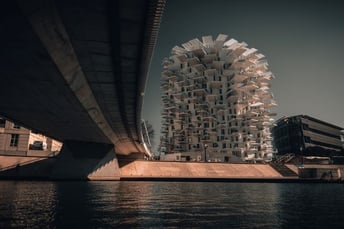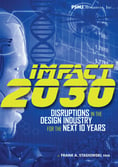In March 2017, Debo rah Hanamura [Executive Director of Sales and Marketing at Paladino and Co., Sustainability & Resilience Leadership] explained the difference between sustainability, resiliency, and climate resilience strategies:
rah Hanamura [Executive Director of Sales and Marketing at Paladino and Co., Sustainability & Resilience Leadership] explained the difference between sustainability, resiliency, and climate resilience strategies:
“Sustainability is the act of ensuring the ability to continue, through stewardship of human, financial, and ecological capital.” wrote Hanamura. “Resiliency, on the other hand, is simply ensuring that the capital base does not fail catastrophically and continues to perform at a net positive rate, even during wild weather events. Climate resilience strategies allow waterfront buildings to flood without damaging major equipment, and to continue operations when the power goes out. Resilience planning allows communities and businesses to bounce back after events.”
Hanamura stresses the comprehensive role resilient design will play in the future. “This isn’t just about rising tides. Resilient design must also address the shelter-in-place realities of hurricanes, tornadoes, blizzards, and heat waves. Meanwhile, communities in drought-affected regions need to create building ecosystems that minimize water consumption and develop nimble ways to cultivate water,” she wrote.
Some of the benefits of resilient design in buildings, include:
-
Employee and community safety
-
Workflow continuity
-
Supply chain continuity
-
Uninterrupted operations
-
Capability of going off grid with on-site water and electricity sources
-
Sustain reputation
-
Community shelter offered by commercial buildings
“Climate resilience may motivate the design and engineering teams to change an HVAC system or to place critical building operation equipment and mechanical systems on higher floors—neither of these strategies add to a project budget, and both increase resilience,” Hanamura noted.
Spawned by the resiliency movement, the Vermont-based non-profit Resilient Design Institute’s (RDI) mission is to “(create) solutions that enable buildings and communities to survive and thrive in the face of climate change, natural disasters and other disruptions.” Its vision is “resilient design is globally accepted and implemented in every built environment as a path to a more sustainable world.”
RDI’s approach is somewhat high-minded, as evidenced by this definition on a web page dedicated to resilient design strategies: “Resiliency is not any single solution, concept or perspective. Resiliency is a multifaceted lens [that] balances proactivity and reactivity to inform solutions to disruptions. Resilient Design is taking that lens and using it to rethink the built environment.” However, from a practical standpoint, RDI offers a list of resiliency goals at the building level and the community level. Some of these goals will inform the work of the designer of 2030.
Resiliency’s importance caught the notice of the United States Green Building Council (USGBC), which authors the guidelines for the Leadership in Energy and Environmental Design (LEED) certification program.
In 2017, The U.S. Green Building Council (USGBC) launched a new certification “that sets the first standard for designing buildings and communities that withstand and recover from natural disasters including floods, tornadoes, droughts, and wildfires.”
Mahesh Ramanujam, president and CEO of USGBC and Green Business Certification Inc. (GBCI) said, “Designing with resiliency in mind is crucial to developing sustainable buildings, communities, and cities. We need to raise awareness, increase capacity and adoption of resiliency in our built environment if we truly want to realize a sustainable future for all.”
About the Author: As Founder and CEO of PSMJ Resources, Inc., Frank A. Stasiowski, FAIA is a counselor, strategist, and advisor to CEOs of the top architecture/engineering/construction (A/E/C) firms in the U.S. and abroad. Stasiowski is a licensed architect with degrees from the Rhode Island School of Design and an MBA from Bryant University. He has spent the last 35 years working with design firms.

This article is an excerpt from the just released IMPACT 2030. As clients demand that work be delivered faster, and as the workforce gets younger, and we increasingly rely on emerging technology to balance cost pressures, nowhere are specific changes discussed in terms of how they affect long term strategic decisions for A/E/C principals. IMPACT 2030 outlines how demographics, globalization, government expansion, and technology advances can benefit firms that plan ahead — and be devastating for those that don’t prepare.



